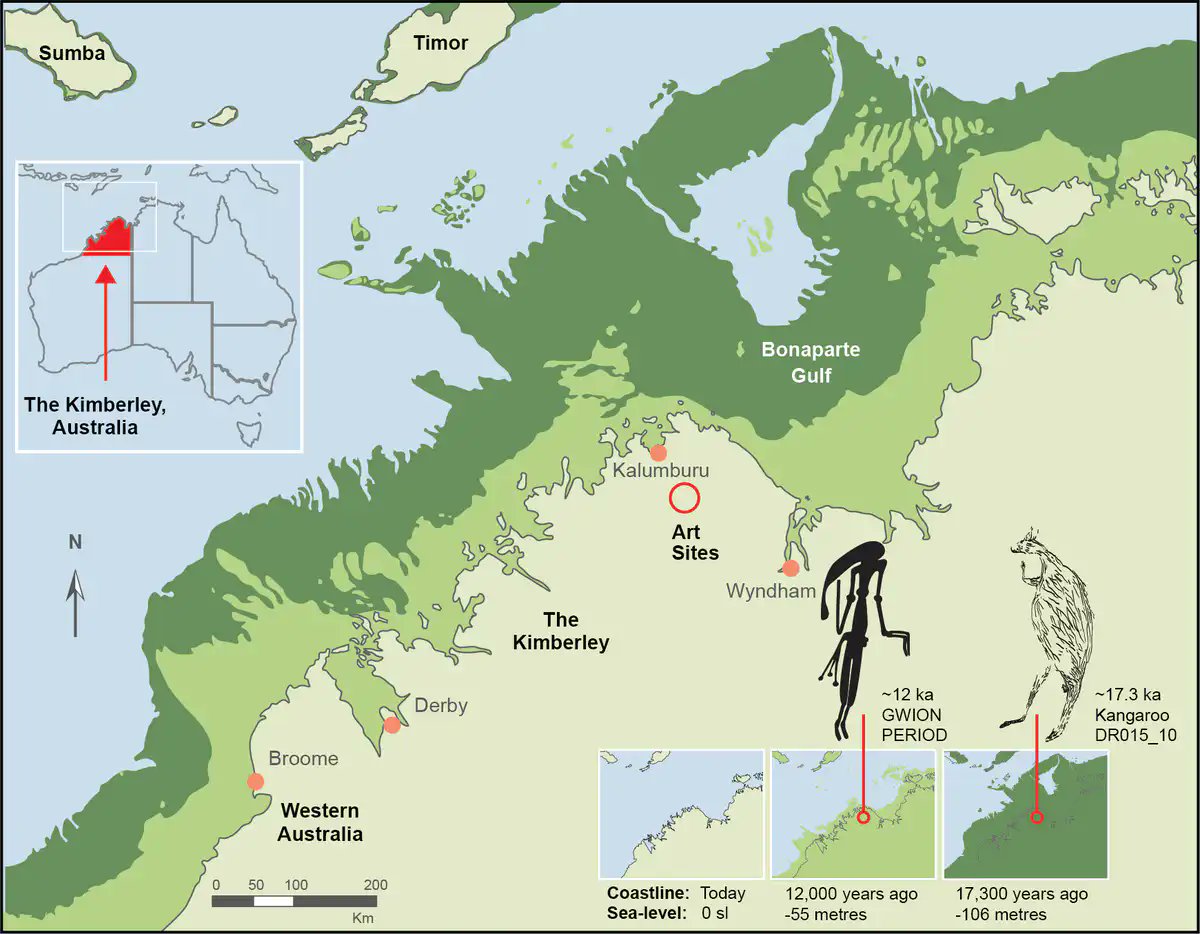The oldest known painting in the country was found in Australia in a rock shelter. The figure is the outline of a kangaroo, filled with lines, painted under a rocky roof that served as a refuge for an artist 17,000 years ago, in an Australian cave. A team of scientists has dated it as the oldest cave painting made on the island. The study has been published in Nature Human Behavior.

Aboriginal artists of that time in Australia used to depict kangaroos, fish, birds, reptiles, echidnas, and plants (especially yams).
Kangaroo Painting Discovery
The cave is located in the Kimberley region, northeast of Australia, in Balanggarra Country. It is an area that belongs to the Unghango clan, a protected indigenous reserve. Aborigines collaborate with scientists in locating cave paintings.

The animal they just dated is a huge, nearly life-size kangaroo, six feet long, spanning the sloping roof of a rock shelter above the Drysdale River. In the article published in Nature Human Behavior, they have dated the artwork to between 17,500 and 17,100 years old, making it the oldest known in situ cave painting in Australia.

For radiocarbon dating, they have used 27 wasp nests made of mud that underlie and cover 16 different paintings of 8 rock shelters. Thus they have discovered that the paintings were produced between 17,000 and 13,000 years ago. The work is part of Australia’s largest rock art dating initiative. The Rock art Australia project takes place in Kimberley, one of the world’s leading rock art regions.
Styles in Australian rock art
The oldest style found on the island usually features the outline of life-size animals filled with irregular dashes. And the ocher used is a red-purple iron oxide that does not keep well, so it is not possible to use it to date the paint. The dating technique using wasp nests has proven very useful.
The team of researchers has dated fossilized insect nests and mineral accumulations on rock surfaces that happen to be above or below the rock art pigment. On the painting of the kangaroo were wasp nests. It was on the roof of a rock shelter well protected from the Drysdale River. The scientists dated three wasp nests underlying the painting and three nests built on top of it. At these ages, we safely determine that the painting is between 17,500 and 17,100 years old; it is most likely close to 17,300 years.
The three levels of sea level

These artists from 600 generations ago lived through the end of the last ice age when the environment was colder and drier than it is now. Sea level was 106 meters below today’s level and the Kimberley coastline was about 300 kilometres, more than half the distance to Timor.
In the Gwion period, about 12,000 years ago, the sea level had risen to 55 m below the current level. This would undoubtedly have led to a long-term adjustment of territories and social relations.

At this time, Aboriginal painters depicted highly decorated human figures, which closely resemble early 20th century photographs of Aboriginal ceremonial costumes. Although plants and animals continued to be painted, human figures were clearly the most popular subject.
The 17,300-year old kangaroo painting is far from being Australia’s oldest known rock art, but what it does do is further illustrate the emerging picture of life in Australia during the Paleolithic. Cave art has been discovered in caves in Spain dated to 65,000 years ago, and according to National Geographic this “includes the oldest cave art ever found” that predates the arrival of modern Homo sapiens to Europe, which means someone else must have created them. And that someone else were the Neanderthals, who were painting in caves around the same time we Homo sapiens were arriving on the shores of Oz.




